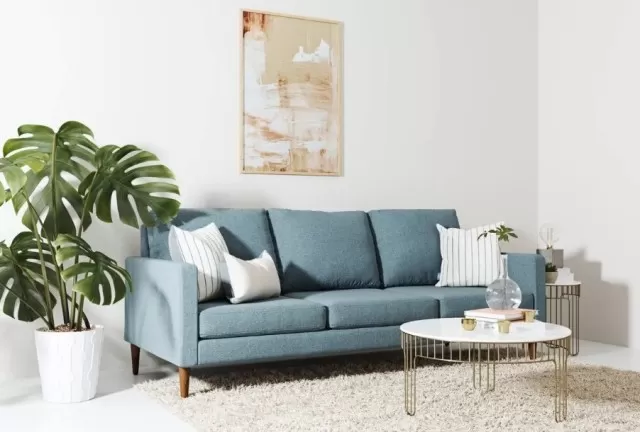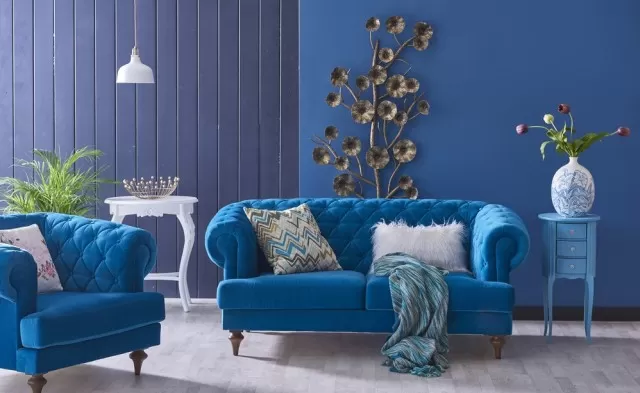Upholstered furniture is prone to wear and tear, and accidents are bound to happen, whether it’s a spilled drink or muddy paw prints.
However, you don’t need to ban food and pets from your Living Room to prevent stains.
By acting quickly, maintaining regular upholstery cleaning, and understanding your fabric, you can effectively handle spills, stains, and other mishaps. These cleaning tips will ensure that your furniture stays in pristine condition for years to come.
Ways to Clean Upholstered Furniture

Vacuum Upholstered Furniture Regularly.
Our top cleaning recommendation is to vacuum your upholstered furniture regularly.
Dirt not only affects the appearance of your furniture, but it can also cause wear and tear on the fabric. Use a clean, dry upholstery attachment or a stiff-bristle brush to remove dried dirt and debris.
Use the crevice tool to reach difficult-to-access areas.
Utilize Baby Wipes for Cleaning.
Surprisingly, baby wipes are effective for quick DIY upholstery cleaning (though it’s important to test them on an inconspicuous area first to ensure they won’t damage the fabric).
These wipes work well on leather, cotton, or polyester, offering a gentle water and soap mixture with minimal moisture. Keep a travel pack of baby wipes handy in the living room for instant spot removal when spills occur.
They are also suitable for spot-cleaning rugs. Act promptly on coffee spills and other accidents to prevent stains from setting.

Follow Fabric Cleaning Codes.
Refer to the manufacturer’s instructions and fabric cleaning code to determine the best method for cleaning your upholstered furniture.
“W” indicates that water can be used, so you can remove the cushion covers and launder them according to the instructions. “S” means a non-water-based solvent, such as alcohol, should be used.
Apply it lightly and blot it with a clean white cloth or sponge. “S/W” means either solvents or water can be used, and “X” means neither solvents nor water should be used—only vacuuming is recommended.
Prevent Stains on Upholstered Furniture.
If your furniture doesn’t come pre-treated with a fabric protector to repel stains, consider applying one yourself or seeking professional assistance.
If it is already treated, inquire about the expected lifespan of the treatment. “Many treatments on the market require reapplication every few years to maintain their stain-fighting properties,” advises Melissa Homer, chief cleaning officer of MaidPro.
Keeping the furniture treated is crucial for prolonging its lifespan.

Handle Upholstered Furniture with Care.
Avoid scrubbing upholstered furniture, even when dealing with tough, set-in stains.
Scrubbing could push the stain deeper into the fibers or damage the fabric. Instead, allow the stain remover to penetrate and set, then gently blot it away.
Use a soft microfiber cloth for blotting, avoiding coarse fabrics or bristled brushes. If the fibers become stiff after cleaning and drying, use a soft brush to loosen the material.
Use Water Sparingly.
Contrary to popular belief, more moisture is not always better when cleaning upholstery, cautions Ron Holt, CEO of Two Maids cleaning service.
Start with a water-free solvent spot remover specifically formulated for upholstery stains. Many affordable upholstery sprays work well on most stains.
If you decide to use a water-based approach, do so sparingly, following Holt’s advice.

Remove pet hair from Upholstered Furniture.
If you have pets that love to snuggle on the couch, try these Cleaning Tips.
To remove pet hair, put on a pair of rubber gloves and run your hands over the furniture, suggests Leslie Reichert of Green Cleaning Coach. “The gloves create static that pulls the hair to the edges, where you can easily vacuum it off,” she explains.
You can also make your static spray by mixing water with a small amount of fabric softener. Spray the solution on the furniture and wipe off the hair with a cloth.
Furniture brushes and Handheld Vacuums designed for pet hair are also effective tools for removing fur from upholstery.
Clean Throw Blankets and Pillows.
When cleaning your furniture, don’t forget to wash your throw blankets and throw pillows.
If they are machine washable, it’s generally best to use the gentle cycle with cold water. If the pillow covers are removable, turn them inside out before washing them.
Ensure that the pillows are thoroughly dried, as dampness can lead to mold. If you’re unsure about washing the pillows, freshen them up by spraying water infused with your favorite essential oil, followed by a tumble in the dryer with a couple of tennis balls.
*The information is for reference only.